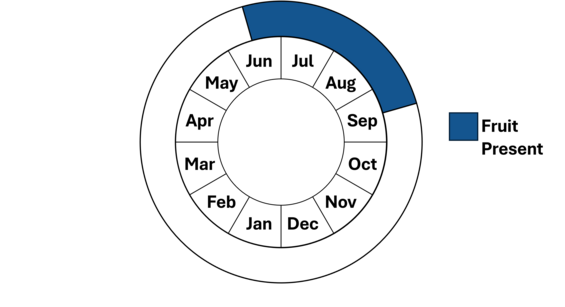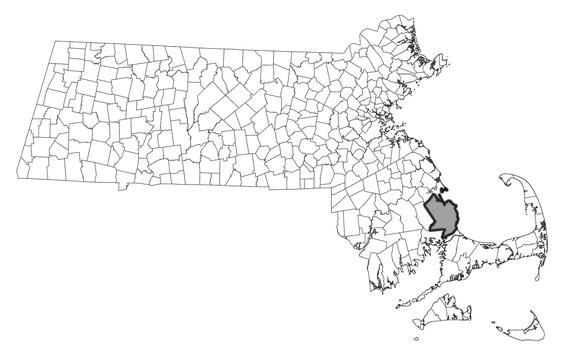- Scientific name: Calamagrostis pickeringii
- Species of Greatest Conservation Need (MA State Wildlife Action Plan)
- Endangered (MA Endangered Species Act)
Description
Pickering’s reedgrass is a perennial species in the grass family (Poaceae) found in a variety of moist, sunny habitats. It grows to a height of 0.2-0.7 m (7.9 -27.6 in), typically as solitary stems scattered along slender rhizomes; it may also form tussocks in fine-textured soils. The stems (culms) are often bluish and coated with a thin, waxy substance. The narrow leaves are smooth above and rough below, flat, and tapering at the base.
To identify Pickering’s reedgrass and other grass species, a technical manual should be consulted. In Pickering’s reedgrass, the glumes, or two lower bracts of the spikelet, are smooth to slightly rough, acute, and strongly tapering towards the tip. Glumes are up to 4.7 mm (0.19 in) in length, with the second (upper) glume often shorter than the first. The lemma, the larger of the pair of bracts that surrounds the flower, is rough and rather thick. An awn (a stiff bristle) emerges from near the base of the lemma, and is about equal in length to the lemma. The callus, a hard protuberance at the base of the lemma, has sparse white hairs that are 20-30% as long as the lemma. The rachilla, the axis of the spikelet, is covered with hair for its entire length.
Calamagrostis canadensis and C. stricta have more abundant callus hairs that are 50% to 120% the length of the lemma. In C. cinnoides, the awn is attached above the middle of the lemma, and the rachilla is covered in hair only at the apex. In C. epigeios, the callus pubescence is longer than the lemma and the rachilla is not prolonged.

Population status
Pickering’s reedgrass is listed under the Massachusetts Endangered Species Act as Endangered. All listed species are protected from killing, collecting, possessing, or sale, and from activities that would destroy habitat and thus directly or indirectly cause mortality or disrupt critical behaviors. Pickering’s reedgrass is currently known from only three locations in Plymouth County. It also occurred historically in Middlesex and Essex Counties.
Distribution and abundance
Pickering’s reedgrass is found in northern New England, New York, Pennsylvania, and New Jersey, northwest to Ontario and northeast to Newfoundland.

Distribution in Massachusetts
1999-2024
Based on records in the Natural Heritage Database
Habitat
In northern New England, Pickering’s reedgrass often occurs at mid to high elevations in a variety of open, moist sites, including alpine barrens, sub-alpine ledges, bogs and fens, sand or gravel riverbanks, damp openings in forests, and boulder-filled headwater streams. The species also occurs in lowland bogs and on pond shores. In Massachusetts, Pickering’s reedgrass has been found growing in frost bottoms and in peaty meadows.
Healthy habitats are vital for supporting native wildlife and plants. Explore habitats and learn about conservation and restoration in Massachusetts.
Threats
Alteration of hydrological conditions, water quality, and substrate conditions in wetlands supporting Pickering’s reedgrass should be avoided, and hydrological conditions and water quality should be monitored. The spread of purple loosestrife (Lythrum salicaria) may have been responsible for the loss of Pickering’s reedgrass at one site where it formerly occurred. Increased shading by woody species may threaten populations in frost bottoms and other habitats.
Conservation
Extant populations of pickering’s reedgrass should be monitored for purple loosestrife and other competing species and, where needed, a plan developed in consultation with the MassWildlife’s Natural Heritage & Endangered Species Program (NHESP) to control these species. All active management of state-listed plant populations (including invasive species removal) is subject to review under the Massachusetts Endangered Species Act and should be planned in close consultation with NHESP.
References
Gleason, H. A., and A. Cronquist. 1991. Manual of Vascular Plants of Northeastern United States and Adjacent Canada, 2nd edition. The New York Botanical Garden, Bronx, NY.
Greene, C. W. 1987. Calamagrostis pickeringii in Maine. Rhodora 89: 333-336
Haines, A. 2011. Flora Novae Angliae – a Manual for the Identification of Native and Naturalized Higher Vascular Plants of New England. New England Wildflower Society, Yale Univ. Press, New Haven, CT.
Snyder, D. 1986. Rare New Jersey plant species rediscovered. Bartonia 52: 44-48.
Zika, P., and J. Jenkins. 1992. Contributions to the flora of the Adirondacks, New York. Bulletin of the Torrey Botanical Club 119: 442-445.
Contact
| Date published: | April 8, 2025 |
|---|